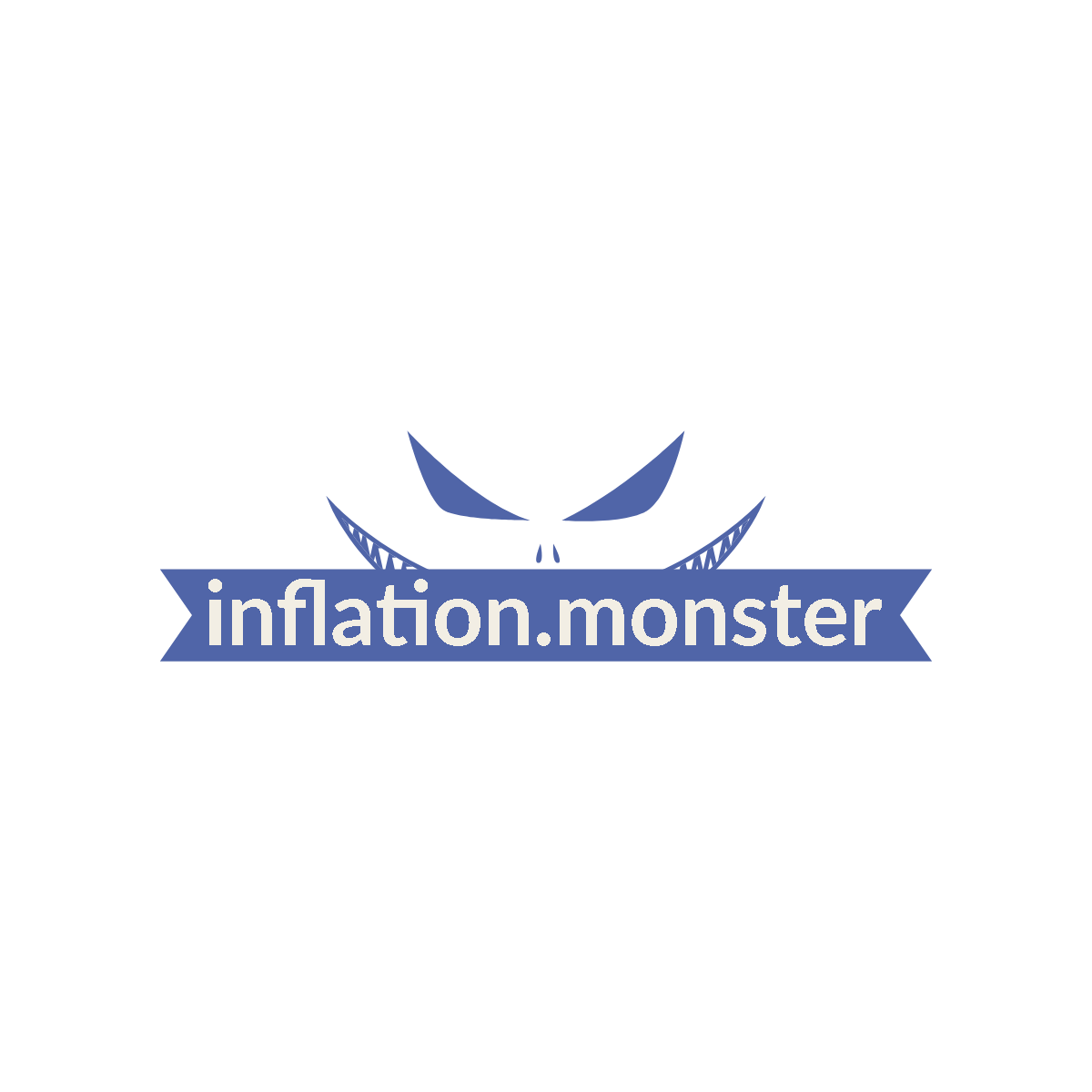Inflation, my friends, is a formidable force that wreaks havoc on economies and financial stability. It sneaks up on us, like a silent monster lurking in the shadows, ready to pounce when we least expect it. But fear not, for here at Inflation.Monster, we are on a mission to decipher the intricacies of this beast and bring you the knowledge you need to predict its next move. In this article, we delve into the art of economic forecasting, exploring the methods and tools economists use to tame the roaring inflation dragon. So come join us on this thrilling journey as we unravel the secrets behind the art of economic forecasting in the face of inflation’s mighty power.

Understanding Inflation
Definition of inflation
Inflation refers to the sustained increase in the general price level of goods and services in an economy over a period of time. It results in a decrease in the purchasing power of money, as the same amount of money can buy fewer goods and services. Inflation is measured using various indices such as the Consumer Price Index (CPI) or the Producer Price Index (PPI). The causes of inflation can be multifaceted and complex, and understanding its dynamics is crucial for economic forecasting and decision-making.
Causes of inflation
There are several factors that contribute to inflation. One major cause is the increase in money supply. When there is excess money in the economy, consumers tend to have more purchasing power, which can drive up demand and subsequently increase prices. Additionally, inflation can be caused by rising production costs, such as the cost of raw materials, labor, or energy. When these costs increase, businesses may pass on the higher expenses to consumers through higher prices. Changes in exchange rates, government policies, and external shocks can also influence inflation rates.
Types of inflation
Inflation can be categorized into different types based on its causes and impacts. One common classification is based on the rate of inflation. Mild or moderate inflation refers to a gradual increase in prices, usually within a range of 2-3% per year. Hyperinflation, on the other hand, is characterized by a rapid and uncontrollable increase in prices, often accompanied by a collapse in the value of the national currency. There are also different classifications based on the underlying cause of inflation, such as demand-pull inflation (caused by excessive demand) and cost-push inflation (caused by rising production costs).
The Importance of Economic Forecasting
Role of economic forecasting
Economic forecasting is the process of predicting future economic conditions, such as economic growth, employment rates, and inflation, based on analysis of current and historical data. It plays a vital role in decision-making for businesses, governments, and individuals, as it helps in understanding and anticipating economic trends. Economic forecasts provide valuable insights into the direction of the economy, enabling policymakers and businesses to make informed choices regarding investments, monetary policies, fiscal policies, and resource allocation.
Benefits of accurate economic forecasting
Accurate economic forecasting has numerous benefits. Firstly, it helps businesses in planning their production and pricing strategies. By forecasting future demand and inflation rates, companies can adjust their production levels and set appropriate prices to optimize their profits. Similarly, individuals can make better financial decisions, such as investments and borrowing, based on accurate predictions of interest rates, inflation, and income growth. For governments, economic forecasts assist in formulating effective monetary and fiscal policies to maintain price stability, promote economic growth, and mitigate the impact of economic downturns.

Factors Influencing Inflation
Monetary policy
Monetary policy refers to the actions and measures taken by a central bank to manage the money supply and interest rates in an economy. It plays a significant role in influencing inflation. Central banks use tools like interest rate adjustments and open market operations to control the supply of money. By increasing interest rates, central banks can reduce the demand for credit and discourage excessive borrowing, which can help control inflationary pressures. Conversely, lowering interest rates can stimulate economic activity by promoting borrowing and consumption, potentially leading to higher inflation.
Fiscal policy
Fiscal policy encompasses the use of government spending and taxation to influence the economy. It can impact inflation through various channels. Expansionary fiscal policies, such as increased government spending and tax cuts, can stimulate aggregate demand, leading to higher inflation. On the other hand, contractionary fiscal policies, such as reduced government spending and higher taxes, can dampen aggregate demand and help control inflation. The effectiveness of fiscal policy in managing inflation depends on its implementation, timing, and coordination with other economic factors.
Supply and demand
The forces of supply and demand in markets play a crucial role in determining the overall price level and, consequently, inflation. When demand for goods and services exceeds supply, prices tend to rise. This demand-pull inflation can occur due to factors such as strong consumer spending, increased investment, or government policies stimulating demand. Similarly, cost-push inflation can occur when production costs, such as wages or raw materials, rise and are passed on to consumers in the form of higher prices. The balance between supply and demand dynamics is essential for stable and controlled inflation.
Methods of Economic Forecasting
Macro vs. microeconomic forecasting
Economic forecasting can be approached at both macroeconomic and microeconomic levels. Macroeconomic forecasting focuses on predicting aggregate economic variables, such as GDP growth, inflation rates, and unemployment rates, for the entire economy or specific sectors. It involves analyzing various macroeconomic indicators and applying statistical models to estimate future trends. On the other hand, microeconomic forecasting involves predicting behavior and trends at the individual firm or household level. It takes into account factors such as consumer behavior, market conditions, and business strategies to forecast specific outcomes for companies or industries.
Quantitative forecasting
Quantitative forecasting involves the use of statistical models and mathematical techniques to predict economic variables based on historical data and patterns. It relies on the assumption that past trends and relationships will continue to hold in the future. Time series analysis, regression analysis, and econometric models are commonly used methods for quantitative forecasting. These techniques provide numerical estimates and probabilities, which can be valuable in decision-making processes.
Qualitative forecasting
Qualitative forecasting takes a subjective approach by relying on expert opinions, surveys, and qualitative data to make predictions about future economic trends. It considers factors that may not be easily quantifiable, such as political stability, technological developments, or social factors. Qualitative forecasting techniques include Delphi method, scenario planning, and expert judgment. While qualitative forecasting may lack the precision of quantitative forecasting, it can provide valuable insights, especially when dealing with uncertain or rapidly changing economic conditions.

Challenges in Economic Forecasting
Limited data availability
Economic forecasting is heavily reliant on the availability and quality of data. However, data collection can be challenging, especially for certain variables or regions where data may be scarce or incomplete. Inaccurate or biased data can lead to flawed forecasts. Additionally, economic data can be subject to revisions and updates, which can make forecasting challenging, particularly when making real-time predictions. Improving data collection methodologies and ensuring data accuracy and transparency are essential for overcoming these challenges.
Uncertain economic conditions
Economic forecasting faces the inherent difficulty of predicting future economic conditions accurately. Economic systems are complex, influenced by numerous variables, and subject to various external factors. Economic shocks, geopolitical events, natural disasters, or changes in government policies can significantly affect economic conditions and render previous forecasts obsolete. Uncertainty increases during periods of economic volatility or structural transformations, making forecasting even more challenging.
Bias and errors in forecasting
Despite the advances in forecasting techniques and methodologies, biases and errors can still affect economic forecasts. Forecasters may have personal biases, such as overoptimism or pessimism, leading to inaccurate predictions. Errors can also arise from model misspecifications or the failure to account for certain variables or interactions accurately. Constant improvements in forecasting models, robust validation processes, and regular evaluation of forecast accuracy are needed to mitigate these biases and errors.
The Relationship between Inflation and Economic Forecasting
How inflation affects economic forecasting
Inflation impacts economic forecasting in several ways. Firstly, accurate inflation forecasts are crucial for businesses and individuals to make informed decisions regarding pricing, investments, wage negotiations, and financial planning. Inflation forecasts help anticipate changes in production costs, interest rates, and purchasing power, providing a foundation for strategic decision-making. Secondly, inflation is often considered a key variable in forecasting models for other economic indicators, such as GDP growth or employment rates. Understanding inflation dynamics enables more accurate predictions of overall economic performance.
Inflation as a key variable in forecasting models
Inflation is frequently included as a fundamental variable in economic forecasting models. It is recognized as a critical indicator of price stability and economic health. Inflation forecasts are used in estimating future interest rates, which have implications for consumption, savings, and investment decisions. Moreover, inflation is a crucial consideration in monetary policy decisions made by central banks. Accurate inflation forecasts are necessary for setting appropriate interest rates, managing inflationary pressures, and ensuring stable economic conditions.
Why Economic Forecasting Sometimes Fails
Inaccuracy of forecasting models
Forecasting models are built based on historical data and assumptions about future trends. However, these models may fail to capture all relevant factors and interactions accurately. Economic systems are dynamic and subject to constant changes, which can render predictive models ineffective or unreliable. Unexpected events and nuances that are not captured in the models can lead to inaccurate forecasts. Model refinement, incorporating additional variables and feedback mechanisms, is an ongoing process to enhance forecasting accuracy.
Unforeseen events and shocks
Economic forecasting is vulnerable to unforeseen events and shocks that can disrupt the predicted economic trajectory. Natural disasters, geopolitical conflicts, financial crises, or technological breakthroughs can have significant impacts and introduce unpredictability into economic forecasts. These events can alter consumer behavior, market conditions, or policy responses, making previous forecasts irrelevant or imprecise. Maintaining flexibility, considering different scenarios and risk assessments, and continually updating forecasts based on new information are essential to adapt to unforeseen events.
Improving Economic Forecasting Accuracy
Enhancing data collection and analysis
Improving the scope and accuracy of data collection is crucial for enhancing economic forecasting accuracy. Investing in data infrastructure, technological advancements, and data-sharing initiatives can provide more comprehensive and real-time data. Leveraging big data and incorporating non-traditional data sources, such as social media or satellite imagery, can provide additional insights into economic trends. Advancements in data analytics, artificial intelligence, and machine learning techniques can aid in extracting meaningful patterns and relationships from complex datasets.
Using advanced predictive modeling techniques
Advancements in analytics and computational capabilities have enabled the development of more sophisticated predictive modeling techniques. Machine learning algorithms, artificial neural networks, and ensemble models are increasingly being used to improve economic forecasting accuracy. These techniques allow for more flexible and adaptive modeling approaches, capable of capturing complex relationships and dynamic interactions. However, these advanced techniques need to be carefully implemented, validated, and combined with expert judgment to avoid over-fitting, biases, and errors.
Implications of Inaccurate Economic Forecasting on Inflation
Consequences of overestimating inflation
Overestimating inflation has several potential consequences. Firstly, it can lead to unnecessary policy tightening, where interest rates are raised beyond what is required. This can dampen economic activity, reduce investments, and increase borrowing costs. Secondly, overestimation of inflation can induce cautious consumer behavior, as individuals may postpone expenditures, anticipating future price declines. This can further weaken aggregate demand and exacerbate economic downturns. Overestimating inflation can harm business confidence, planning, and overall economic stability.
Consequences of underestimating inflation
Underestimating inflation can also have significant implications. Firstly, underestimating inflation can result in loose monetary policy, where interest rates are kept too low for too long. This can fuel excessive borrowing, speculative activities, and asset price bubbles. Secondly, underestimation of inflation can erode consumers’ purchasing power, as wages and salaries fail to keep up with rising prices. This can lead to social unrest and inequality. Underestimating inflation can undermine confidence in monetary policy, erode trust in institutions, and destabilize the economy.
The Role of Central Banks in Economic Forecasting
Responsibilities of central banks
Central banks play a critical role in economic forecasting and managing inflation. They are responsible for formulating and implementing monetary policy to achieve price stability, promote economic growth, and maintain financial stability. Central banks closely monitor economic indicators, analyze data, and make forecasts to guide their policy decisions. Their actions, such as adjusting interest rates, open market operations, or implementing unconventional measures, are based on accurate economic forecasts and analysis.
Central banks’ use of economic forecasts
Economic forecasts are essential tools for central banks in setting monetary policy. Inflation forecasts, in particular, inform decisions regarding interest rates and the appropriate level of monetary accommodation. Central banks use economic forecasts to assess the risks and outlook for inflation, evaluate the state of the economy, and identify potential imbalances or vulnerabilities. Regular updates to forecasts and ongoing assessment of their accuracy help central banks adapt and fine-tune their policy responses to maintain price stability and support economic growth.
In conclusion, understanding inflation and its relationship with economic forecasting is crucial in navigating the complex realm of money and economics. Inflation affects various economic variables and decision-making processes at individual, business, and government levels. Accurate forecasting of inflation and economic conditions helps inform strategic choices, policy formulation, and resource allocation. Despite the challenges and limitations, continuous improvements in economic forecasting techniques, data availability, and analytical capabilities contribute to better predictions and more informed decision-making.




